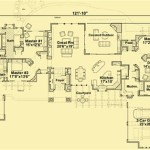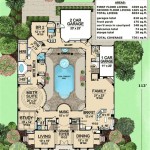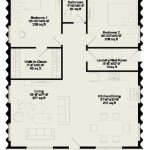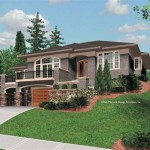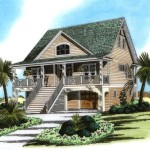Tiny House Plans: Design Your Dream Home On A Smaller Scale of Land
The tiny house movement has gained significant momentum in recent years, appealing to individuals seeking a simpler, more sustainable, and affordable lifestyle. Embracing minimalism and downsizing, the concept of tiny homes offers a unique opportunity to own a dwelling that aligns with contemporary aspirations. As the name suggests, these homes are typically under 400 square feet, demanding careful planning and thoughtful design to maximize functionality and comfort. The process of designing a tiny house plan requires meticulous consideration of space utilization, layout, and aesthetics to create a cozy and efficient living environment.
Key Considerations for Tiny House Plan Design
Designing a tiny house plan involves making strategic decisions that balance functionality and aesthetics within a limited footprint. Key considerations include:
1. Space Optimization and Multi-Functionality
Maximizing space is paramount in a tiny house. This involves incorporating multi-functional furniture and appliances. For instance, a sofa bed can serve as both seating and sleeping space, while a kitchen island can double as a dining table. Utilizing vertical space through shelving and cabinets is crucial for storage. Compact appliances like mini-refrigerators and portable dishwashers help save valuable floor space.
2. Layout and Flow
The layout of a tiny house should prioritize efficient flow and seamless transitions between spaces. Open-concept designs, where the kitchen, living area, and dining area seamlessly connect, create a sense of spaciousness. Careful consideration should be given to the placement of doorways, hallways, and stairs to ensure easy movement and accessibility. The placement of windows should be strategically chosen to maximize natural light and ventilation.
3. Aesthetics and Personalization
Although compact, tiny houses can be visually appealing and reflect personal style. The use of light colors, natural materials, and strategically placed mirrors can create a sense of spaciousness. Carefully selecting furniture and décor that complement the overall design theme enhances the aesthetic appeal. Personalization is key, allowing residents to create a unique and inviting space that reflects their individuality.
Designing Your Tiny House Plan: A Step-by-Step Guide
Creating a tiny house plan requires a thoughtful, systematic approach. This guide outlines the essential steps involved:
1. Define Your Needs and Priorities
Before embarking on the design process, it is crucial to define your specific needs and priorities. Consider how many people will be living in the house, your desired lifestyle, and your budget. Determine the essential features and functionalities you require, such as a designated bedroom, bathroom, kitchen, and living space. Set a clear budget to guide your design choices and material selection.
2. Research and Explore Existing Tiny House Plans
Explore a variety of existing tiny house plans available online and in publications. This research will expose you to various design concepts, layouts, and features. Analyzing successful designs will inspire and inform your own plan. Pay attention to space utilization, layout flow, and aesthetic elements that resonate with your preferences.
3. Sketch and Plan Your Layout
Once you have a clear idea of your needs and preferences, begin sketching your own layout. Use graph paper or software to create a scaled drawing of the floor plan. Experiment with different configurations, furniture placement, and appliance selections to optimize space and functionality. Consider the placement of windows, doors, and skylights for natural light and ventilation.
4. Design the Exterior and Interior
After finalizing the layout, focus on the exterior and interior design. Choose a style that reflects your taste and complements the overall design. Consider using sustainable materials like reclaimed wood, bamboo, or recycled plastics. Select a roof style that suits your climate and aesthetic preferences. Determine the color scheme, materials, and finishes for the interior, ensuring they create a cohesive and inviting atmosphere.
5. Consult with Professionals
For complex designs or those involving structural elements, consult with a professional architect or engineer. Their expertise can address structural integrity, code compliance, and energy efficiency. They can also provide valuable insights and guidance on design aspects you may not be familiar with.
Conclusion
Designing a tiny house plan is a rewarding and creative process. By carefully considering space optimization, layout, and aesthetics, you can create a stylish and functional dwelling that meets your specific needs and priorities. Remember to prioritize functionality, embrace minimalism, and personalize your design to create a unique and inviting space that reflects your individuality.

27 Adorable Free Tiny House Floor Plans Craft

27 Adorable Free Tiny House Floor Plans Craft

Small House Plans 18 Home Designs Under 100m2

16 Cutest Tiny Home Plans With Cost To Build Craft

27 Adorable Free Tiny House Floor Plans Craft

Simple Tiny House Layout

27 Adorable Free Tiny House Floor Plans Craft

Small House Plans Simple Tiny Floor Monster

16 Cutest Tiny Home Plans With Cost To Build Craft

10 2 Bedroom Shed House Plans And Designs Tiny Craft
Related Posts

